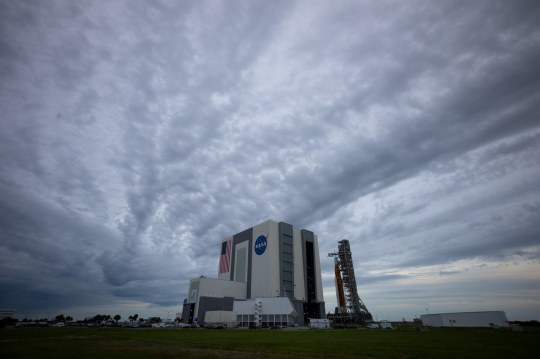#EuropeanServiceModule
Explore tagged Tumblr posts
Photo

Rocket rollback by europeanspaceagency NASA started rolling the Artemis I Space Launch System rocket and Orion spacecraft with its European Service Module back to the Vehicle Assembly Building on 26 September at 05:21 CEST (04:21 BST). The return to hangar was based on weather predictions associated with Hurricane Ian, that were not improving around the launchpad at the Kennedy Space Center area in Florida, USA. The decision allows time for employees to address the needs of their families and protect the integrated rocket and spacecraft system. NASA’s Artemis I flight test will be the first integrated test of the agency’s deep space exploration systems: the Orion spacecraft, SLS rocket, and supporting ground systems. ESA’s European Service Module will be powering the Orion spacecraft to the Moon and back. The European Service Module – or ESM – provides for all astronauts’ basic needs, such as water, oxygen, nitrogen, temperature control, power and propulsion. Much like a train engine pulls passenger carriages and supplies power, the European Service Module will take the Orion capsule to its destination and back. Credits: ESA - S. Corvaja https://flic.kr/p/2nPHSyb
23 notes
·
View notes
Text
Artemis 1 - Moon Mission

Artemis 1 Moon Mission UPDATE:
The 29 August launch has been cancelled. A fresh launch attempt is being confirmed as we await information.
At the iconic Launchpad 39B at the Kennedy Space Center in Florida, the United States, the Orion spacecraft with an integrated European Service Module is perched atop the Space Launch System.
The trio has been approved for launch by the Flight Readiness Review, ushering in a new era in space exploration.
The launch of Artemis I, the first of many missions that will bring people back to the Moon and bring the first European aboard, is planned for no sooner than Monday, August 29, at 14:33 CEST.
During a voyage to the Moon and back, this mission will put NASA's spacecraft and our European Service Module to the test. This time, there won't be any crew aboard Orion; instead, personnel on Earth will operate the ship.
But the crew module won't be deserted. The passenger seats will be occupied by two mannequins with the names of Helga and Zohar. Over 5600 sensors are housed in each of their female-shaped plastic bodies to detect the radiation dose as they orbit the Moon. @shaunthesheep, a woolly astronaut with specific training, has also been given a seat.
The spacecraft will launch itself almost half a million kilometers away from Earth, farther than any human-rated spacecraft has ever travelled, then enter lunar orbit using the Moon's gravity to acquire speed.
Four astronauts will fly past the Moon on the second Artemis mission as they circle our natural satellite.
The launch date and even time affect mission length. Depending on how many Moon circles the mission's designers decide to do, it will take 20 to 40 days.
For the mission to successfully conclude with a splashdown during the daytime in the Pacific Ocean, off the coast of California, USA, this flexibility in mission duration is required.
If a launch on August 29 is not feasible, there are two further dates available. Both September 2 and September 5 are potential launch dates for the Artemis Moon mission.
~ Jai Krishna Ponnappan
Find Jai on Twitter | LinkedIn | Instagram
#Artemis#Orion#Artemis1#ESM#ForwardToTheMoon#EuropeanServiceModule#Space Exploration#Moon Mission#Inter planetary Science
1 note
·
View note
Photo

Orion frame work by europeanspaceagency http://flic.kr/p/VMH3TK
0 notes